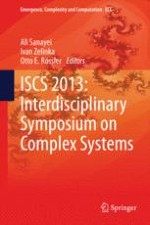2014 | OriginalPaper | Buchkapitel
How is the Process Network Organized and When Does it Show Emergent Properties in a Forest Ecosystem?
verfasst von : Juyeol Yun, Minseok Kang, Sehee Kim, Jung Hwa Chun, Chun-Ho Cho, Joon Kim
Erschienen in: ISCS 2013: Interdisciplinary Symposium on Complex Systems
Verlag: Springer Berlin Heidelberg
Aktivieren Sie unsere intelligente Suche, um passende Fachinhalte oder Patente zu finden.
Wählen Sie Textabschnitte aus um mit Künstlicher Intelligenz passenden Patente zu finden. powered by
Markieren Sie Textabschnitte, um KI-gestützt weitere passende Inhalte zu finden. powered by
